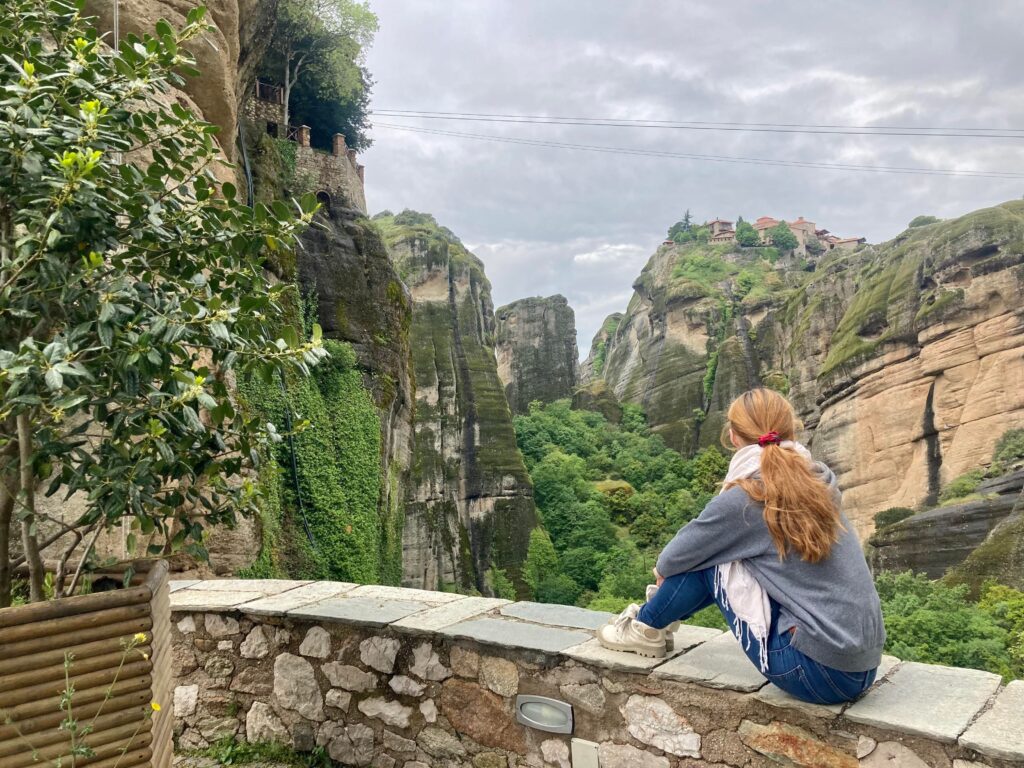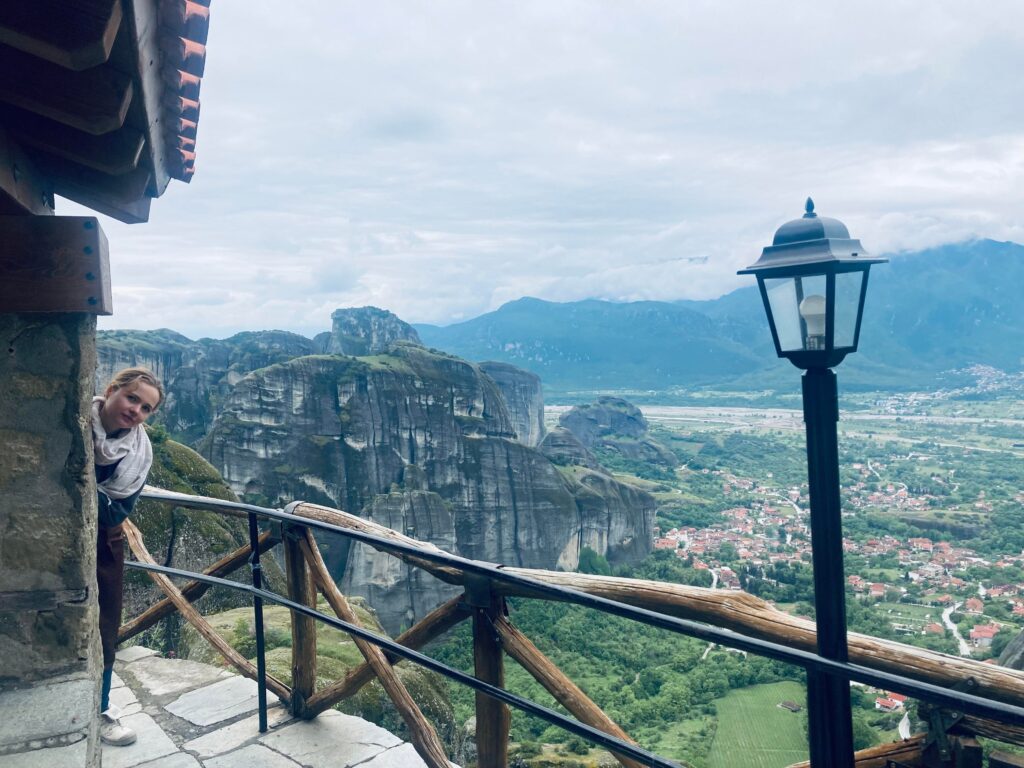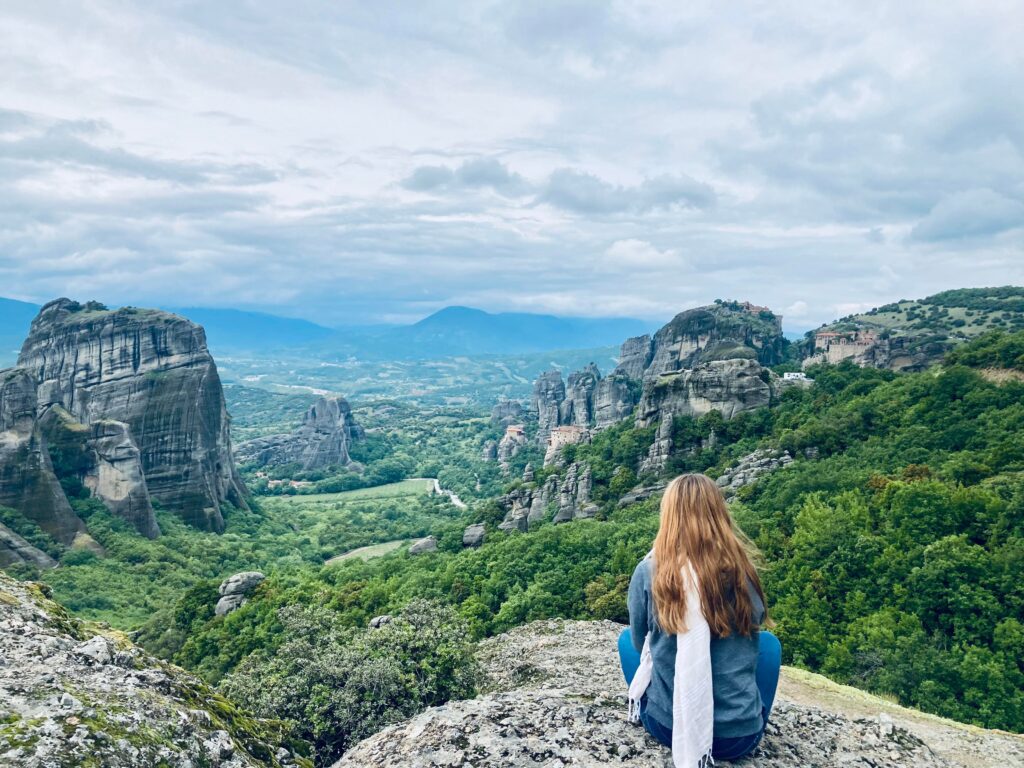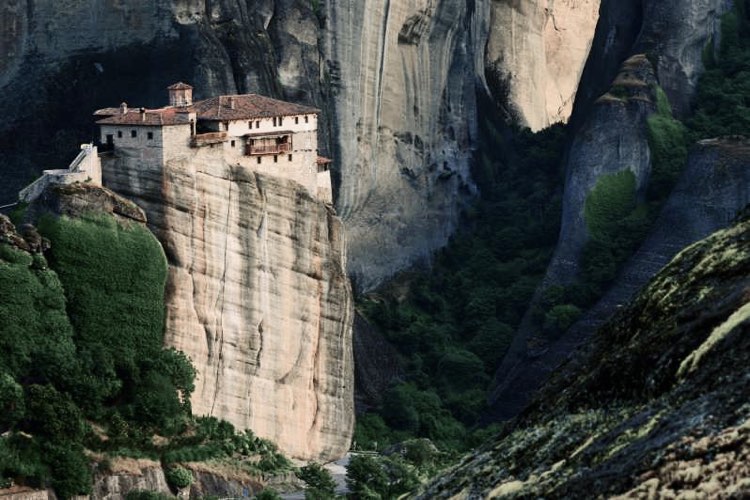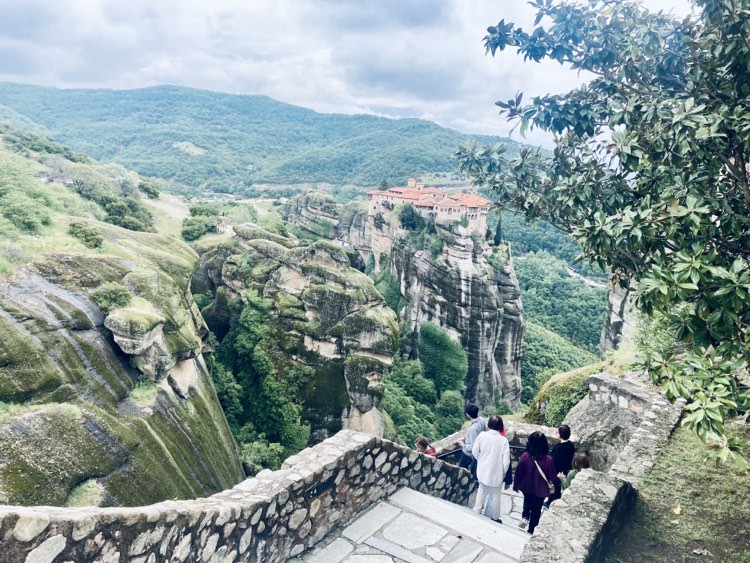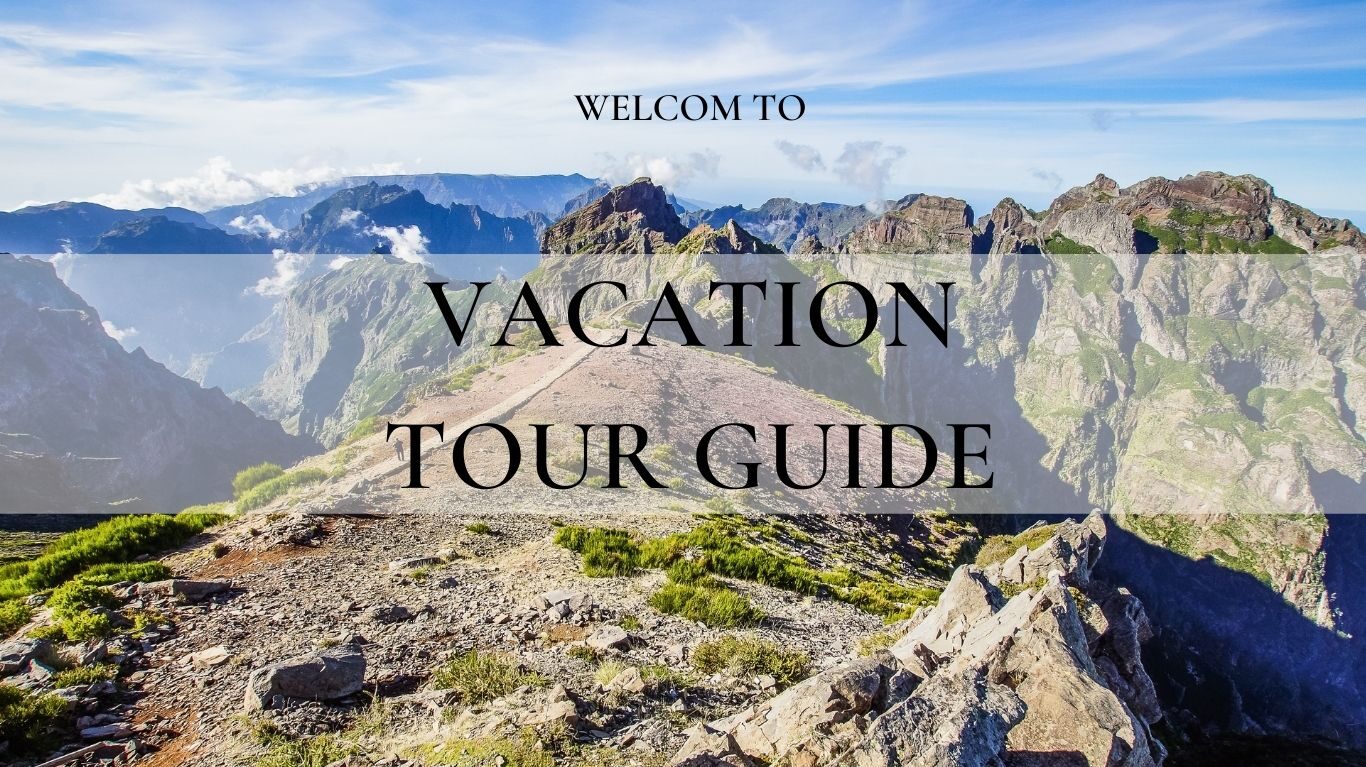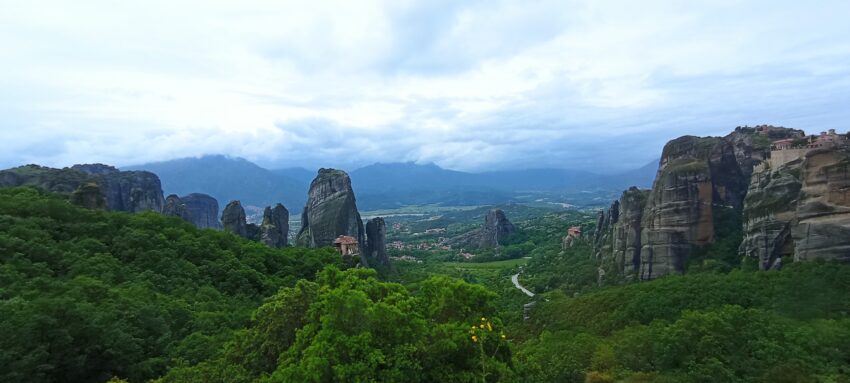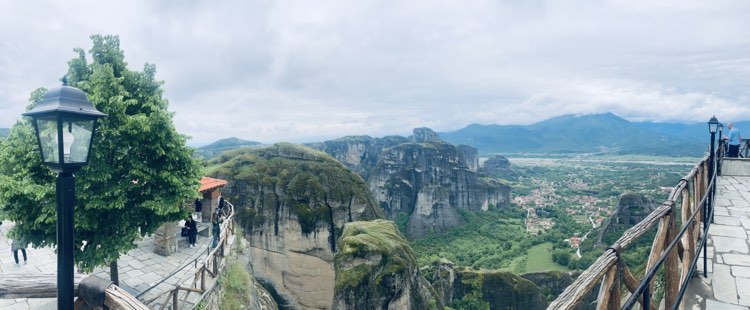We set off on a trip from the small town of Parga by bus, about 2 hours away. Outside, there stretched long stretches of lush green vegetation. The cloudy day didn’t promise beautiful views, but deep inside, there was still a glimmer of enthusiasm that we would be able to see the beauty of this region. Greece is renowned for its blue sunny beaches and turquoise waters. In the heart of the mainland, there is a less obvious place of soul soothing like Meteora.
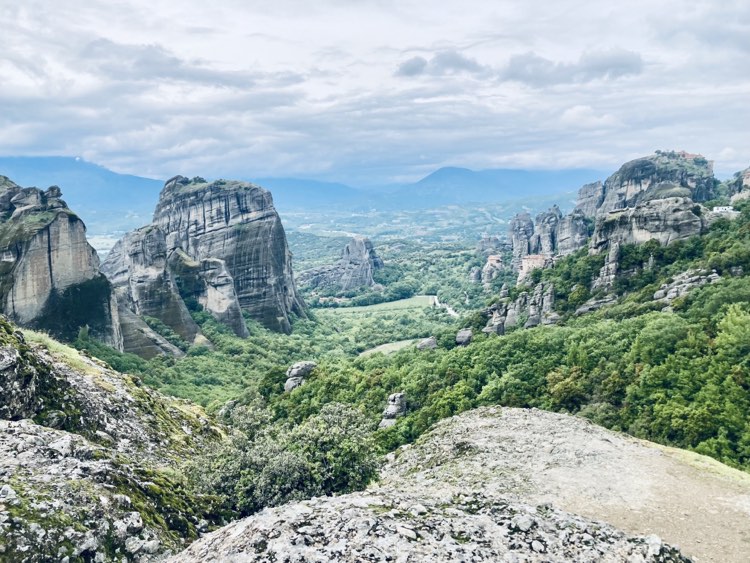
A Glimpse into History
The Monasteries of Meteora in Greece stand as a testament to the spiritual and architectural marvels of the Byzantine era. Perched atop towering rock formations, these monasteries have captivated visitors with their awe-inspiring beauty and historical significance. In this article, we delve into the background of the Meteora monasteries, exploring their rich history, spiritual significance, and their status as a UNESCO World Heritage site.
The Origins of the Meteora Monasteries
The roots of the Meteora monasteries trace back to the 9th century when hermit monks sought refuge in the secluded caves and fissures of the area. Seeking solace and spiritual isolation, these early ascetics laid the foundation for the monastic community that would later flourish in Meteora.
The Spiritual Significance of Meteora
Meteora holds immense spiritual significance for the Orthodox Christian community. The monasteries serve as places of worship, prayer, and contemplation. They are seen as gateways to heaven, where monks and nuns dedicate their lives to spiritual pursuits, adhering to a strict monastic lifestyle.
- The Enchanting Landscape
The landscape is dominated by colossal rock pillars that rise abruptly from the ground, reaching impressive heights of up to 400 meters (1,300 ft). It is a charming landscape that captivates the senses and delights with its beauty. Composed of sandstone and conglomerate, these tall rocks were formed millions of years ago by the combined forces of tectonic activity, weathering and erosion. Over time, the elements have sculpted these massive formations, creating a surreal and awe-inspiring sight.
It is a place where beauty and serenity meet, offering amazing views of the surrounding valleys, the city of Kalambaka, lush greenery and winding rivers. These rocks seem to oppose the force of gravity, and when the sun goes down, it casts its golden glow and the landscape transforms into a magical land. Meteora’s natural setting is the perfect place to contemplate and meditate, providing a serene and peaceful atmosphere, encouraging a deep connection with nature.
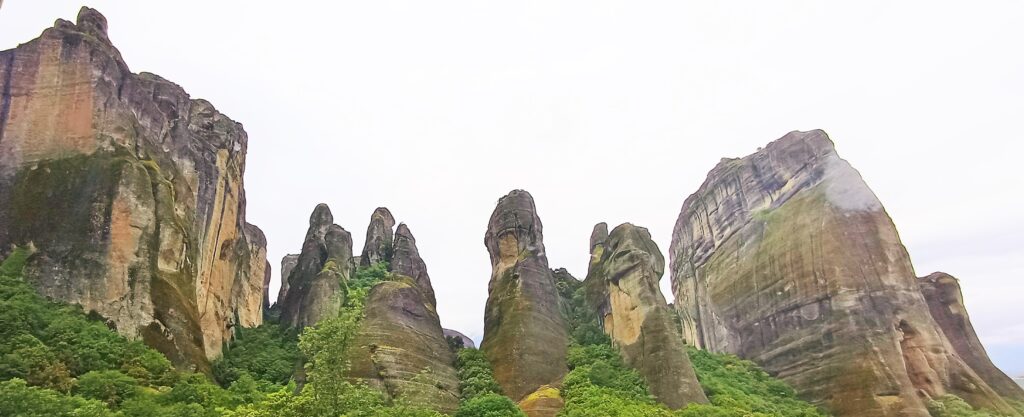
- Spiritual and Cultural Heritage
Meteora holds great religious significance as a haven for spiritual practices. The monasteries perched on the towering rocks are sanctuaries for monks and nuns, where they devote themselves to prayer and contemplation. The monastic community follows the traditions of the Eastern Orthodox Church, conducting religious services and rituals regularly. Visitors can witness the devotion and commitment of the residents, engaging in meaningful conversations to gain insight into their way of life. Meteora provides a sacred space for pilgrims and visitors to find solace, inspiration, and a connection with the divine. It is a place where spirituality and nature harmoniously converge, creating a profound sense of awe and inner reflection.
Meteora comes alive during religious festivals and feast days, where the local community and visitors gather to celebrate and express their faith. Prominent events include the Feast of the Transfiguration, the Feast of the Assumption of the Virgin Mary, and the commemoration of the patron saints of each monastery. Pilgrims participate in processions, attend religious services, and engage in rituals that mark these occasions, immersing themselves in the spiritual energy of the festivities.

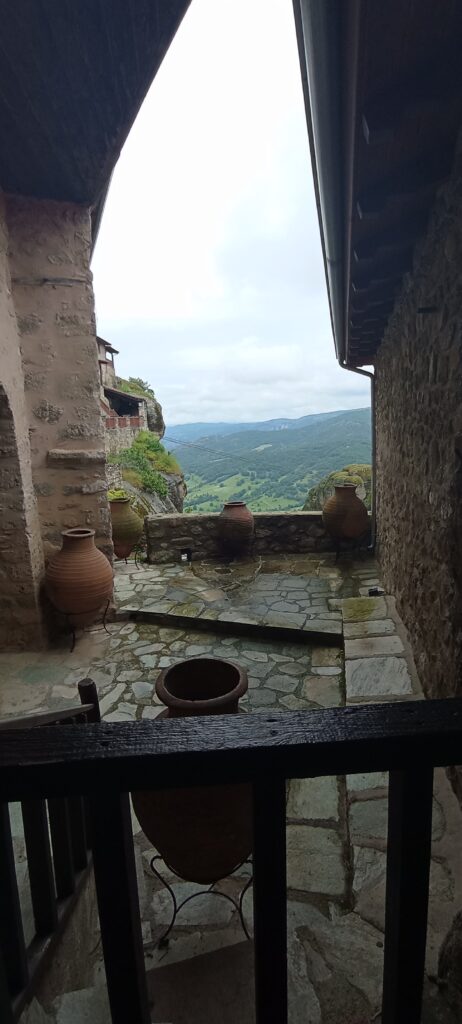
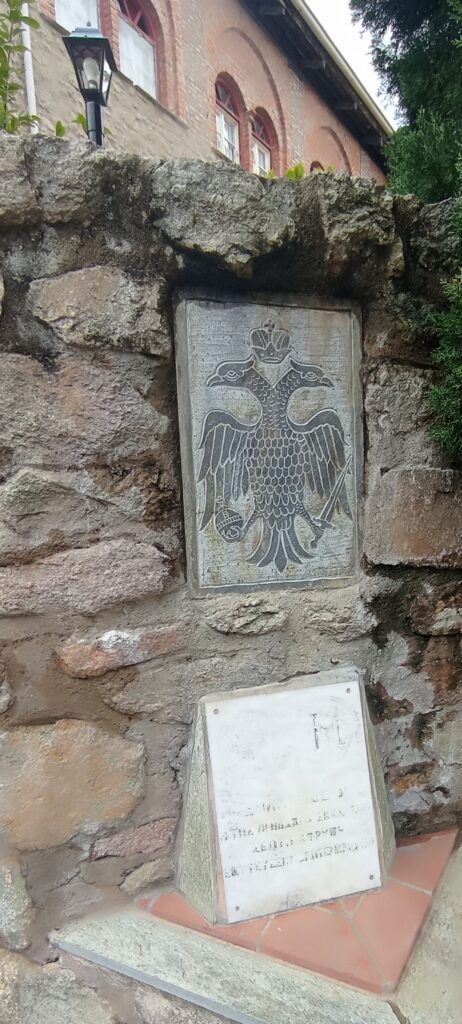
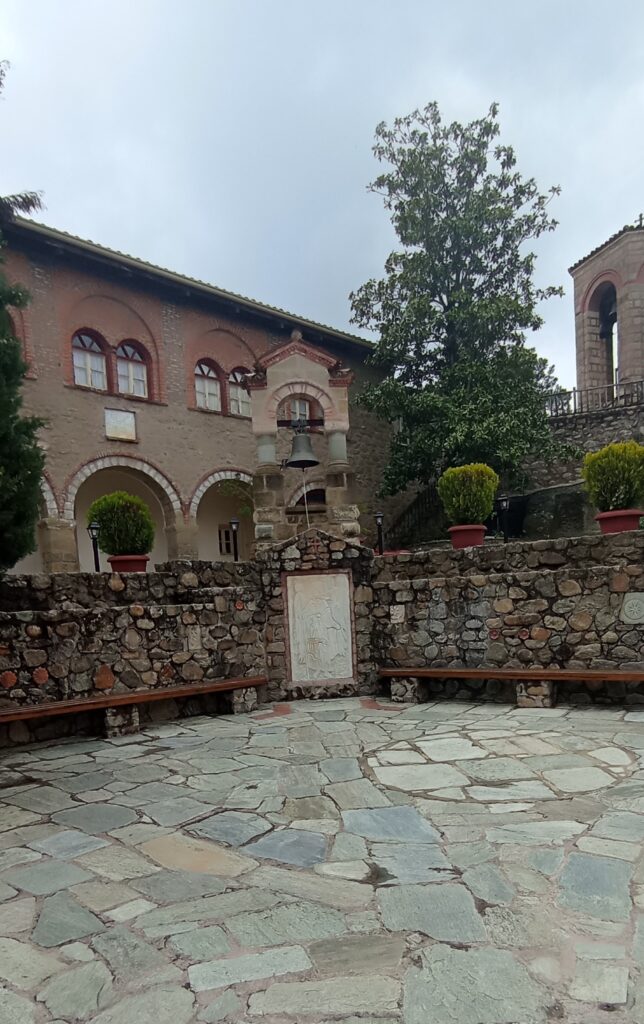
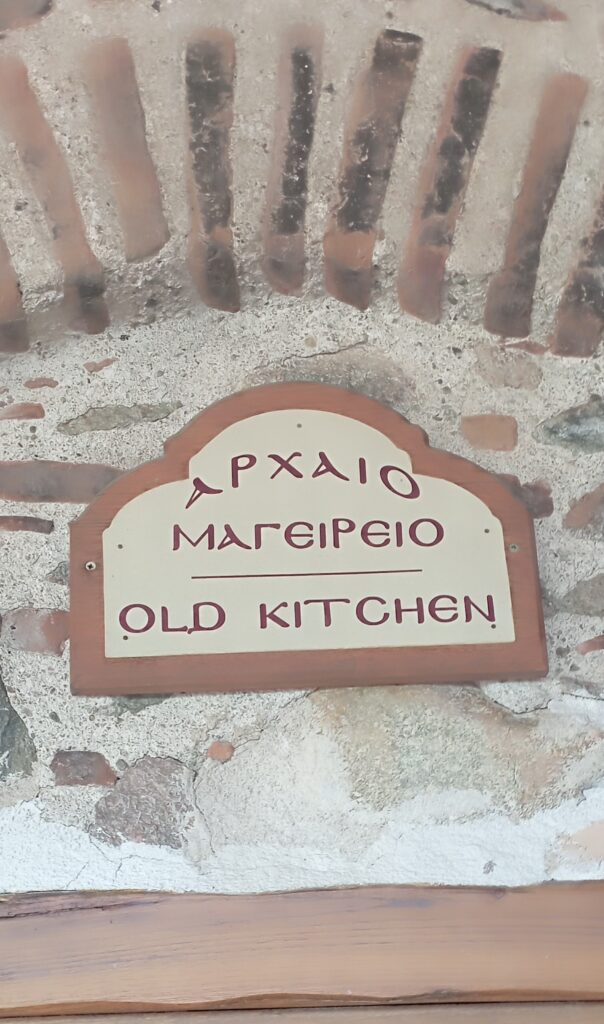
Exploring the monasteries Tips for visitors
• Plan ahead: Research the best times and days to visit monasteries. The opening hours of some monasteries vary, and certain days may be closed. Mind the assembly time, the stairs are often crowded, so take this into account so as not to be left out of the group.
• Appropriate Dress: A modest dress code is required in these places of worship. Long pants are recommended for men, and long skirts or dresses are recommended for women. Scarves may be required to cover the head in some monasteries. Scarves are available for rent at the ticket window.
• Respectful behavior: Avoid loud conversations, taking pictures where prohibited, and any activity that may disturb a peaceful environment.
• Photography: While photography is generally permitted outside monasteries, it may be restricted or prohibited in certain indoor areas. Always follow any signs or instructions provided by the monastery.
• Silence and worship: Monasteries are places of worship and reflection. Maintain a respectful silence and refrain from disturbing loud conversations. Avoid using mobile phones, playing music or engaging in activities that may disturb others.
• Donations and Souvenirs: A candle can be purchased and paid for, some monasteries may have donation boxes where visitors can contribute to the upkeep and preservation of these sacred sites. In addition, souvenir shops in monasteries give you a chance to support the local community and bring home valuable souvenirs. I recommend buying local products in this way to repay the opportunity to admire this culture, I definitely recommend buying olive oil, wines, if you like smells, local incense.
Accessible Monasteries and Hiking Routes :
Accessible Monasteries: Not all monasteries are easily accessible for individuals with mobility challenges due to their location on steep rocks. However, some monasteries, such as the Monastery of St. Stephen and the Monastery of Rousanou, have improved accessibility with ramps or elevators, allowing visitors with limited mobility to explore their grounds and experience their beauty.
Hiking Routes: For those seeking an active adventure, Meteora offers various hiking trails that lead to stunning viewpoints and monasteries. Kalambaka, the city under the mysterious Meteora, invites visitors on a fascinating journey that goes beyond the monasteries. Ideal routes to overcome by bike or motorbike, for persistent walks on foot. The most popular hiking route is the Path of the Monks, which winds through the natural landscape, offering breathtaking views along the way. Other trails, such as the Great Saint Route and the Holy Trinity Route, provide different perspectives of the monastic complex.
Safety Precautions: Before embarking on a hike, ensure you are adequately prepared with proper footwear, water, sunscreen, and a map of the hiking routes. Some trails may require moderate physical fitness and caution due to uneven terrain and steep ascents/descents.
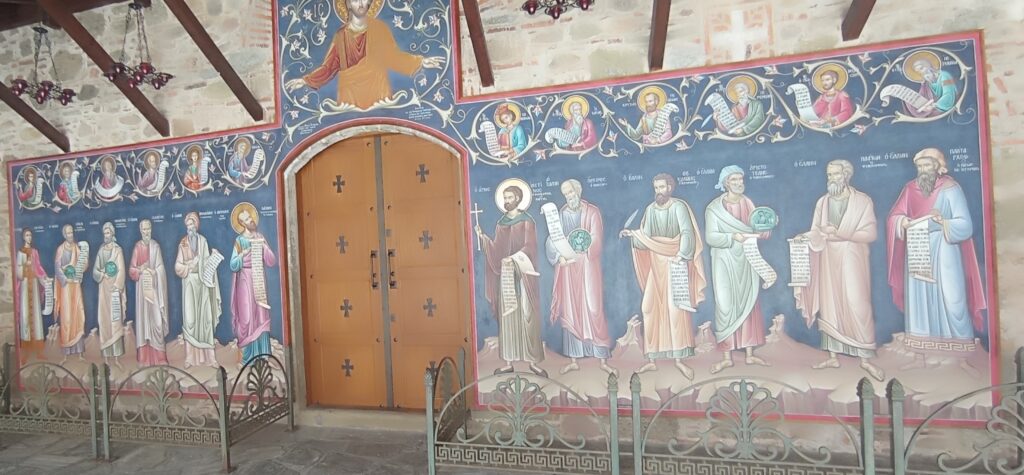
Unveiling the Secrets
Life of the monks and nuns in the monastic community
The monastic community of Meteora is an integral part of the monasteries’ identity. Comprising of monks and nuns, this close-knit community upholds centuries-old traditions, diligently maintaining the spiritual sanctity of the monasteries. Visitors can gain insight into their way of life and engage in meaningful conversations with the residents. Currently there are only a few monks living in this area and it is not easy to meet them, they avoid the presence of the crowd and focus on religious practices.
Legends and stories surrounding the monasteries
Flying Monks of Meteora :
Legend has it that the monasteries of Meteora were originally built by „flying monks.” According to the tales, these brave and devoted monks would ascend the towering cliffs using ropes, ladders, and sheer determination, defying gravity in their quest for spiritual solitude. This extraordinary feat of levitation is said to have been aided by divine intervention, granting the monks the ability to soar through the skies.
The Rock of the Precious Theotokos :
One of the most cherished legends of Meteora revolves around the Rock of the Precious Theotokos, which is home to the Monastery of Agia Triada (Holy Trinity). According to the story, a group of monks discovered an icon of the Virgin Mary embedded in the rock. Despite their efforts to remove it, the icon miraculously returned to its original place. Believed to be a sign from the heavens, the monks decided to build the Holy Trinity Monastery around the sacred icon, honoring it as a divine presence.
The Sacred Hermitage of Varlaam :
The Monastery of Varlaam holds a mystical story surrounding its construction. It is said that a local shepherd named Varlaam dreamed of the location where the monastery should be built. Guided by his vision, Varlaam shared his divine revelation with the monks, who were inspired to erect the monastery atop the chosen rock formation. The hermitage of Varlaam serves as a testament to the transformative power of dreams and the deep spiritual connection that permeates the land of Meteora.
The Tale of Love and Sacrifice :
In the midst of the legends, there are stories of love and sacrifice associated with the monasteries. One such tale tells of a noblewoman who fell in love with a monk from Meteora. The couple faced numerous obstacles in their pursuit of love, including societal expectations and the vows of monastic life. In the end, the noblewoman chose to renounce her worldly life and join the monastery, dedicating herself to a life of devotion and spiritual union with her beloved.
Preserving the Legacy
UNESCO World Heritage Site Status
In recognition of its exceptional cultural and natural significance, Meteora was designated as a UNESCO World Heritage site in 1988. The monasteries are a testament to the harmonious integration of human craftsmanship with the natural landscape, representing an exceptional example of Byzantine architecture and religious heritage.
